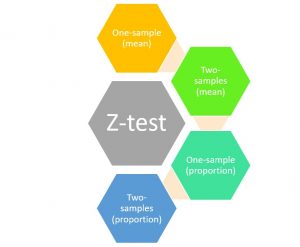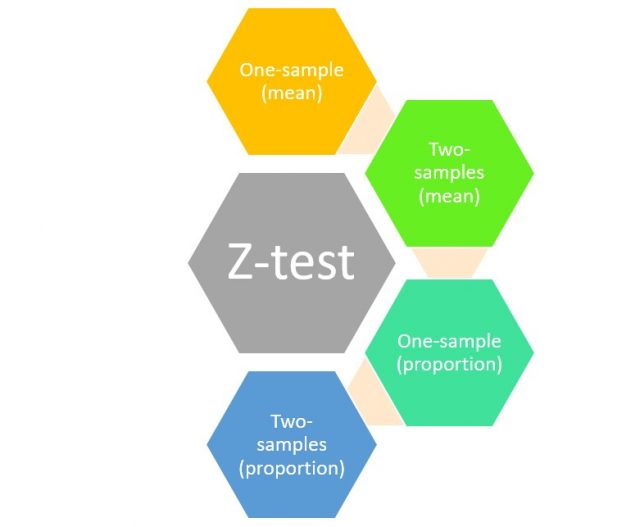
Z-tests are statistical hypothesis testing techniques that are used to determine whether the null hypothesis relating to comparing sample means or proportions with that of population at a given significance level can be rejected or otherwise based on the z-statistics or z-score. As a data scientist, you must get a good understanding of the z-tests and its applications to test the hypothesis for your statistical models. In this blog post, we will discuss an overview of different types of z-tests and related concepts with the help of examples. You may want to check my post on hypothesis testing titled – Hypothesis testing explained with examples
What are Z-tests & Z-statistics?
Z-tests can be defined as statistical hypothesis testing techniques that are used to quantify the hypothesis testing related to claim made about the population parameters such as mean and proportion. Z-test uses the sample data to test the hypothesis about the population parameters (mean or proportion). There are different types of Z-tests which are used to estimate the population mean or proportion, or, perform hypotheses testing related to samples’ means or proportions.
Different types of Z-tests
There are following different types of Z-tests which are used to perform different types of hypothesis testing.
- One-sample Z-test for means
- Two-sample Z-test for means
- One sample Z-test for proportion
- Two sample Z-test for proportions
Four variables are involved in the Z-test for performing hypothesis testing for different scenarios. They are as follows:
- An independent variable that is called the “sample” and assumed to be normally distributed;
- A dependent variable that is known as the test statistic (Z) and calculated based on sample data
- Different types of Z-test that can be used for performing hypothesis testing
- A significance level or “alpha” is usually set at 0.05 but can take the values such as 0.01, 0.05, 0.1
When to use Z-test – Explained with examples
The following are different scenarios when Z-test can be used:
- Compare the sample or a single group with that of the population with respect to the parameter, mean. This is called as one-sample Z-test for means. For example, whether the student of a particular school has been scoring marks in Mathematics which is statistically significant than the other schools. This can also be thought of as a hypothesis test to check whether the sample belongs to the population or otherwise.
- Compare two groups with respect to the population parameter, mean. This is called as two-samples Z-test for means. For example, you want to compare class X students from different schools and determine if students of one school are better than others based on their score of Mathematics.
- Compare hypothesized proportion of the population to that of population theoritical proportion. For example, whether the unemployment rate of a given state is different than the well-established rate for the ccountry
- Compare the proportion of one population with the proportion of othe rproportion. For example, whether the efficacy rate of vaccination in two different population are statistically significant or otherwise.
Z-test Interview Questions
Here is a list of a few interview questions you may expect in your data scientists interview:
- What is Z-test?
- What is Z-statistics or Z-score?
- When to use Z-test vs other tests such as T-test or Chi-square test?
- What is Z-distribution?
- What is the difference between Z-distribution and T-distribution?
- What is sampling distribution?
- What are different types of Z-tests?
- Explain different types of Z-tests with the help of real-world examples?
- What’s the difference two samples Z-test for means and two-samples Z-test for proportions? Explain with one example each.
- As data scientists, give some scenarios when you would like to use Z-test when building machine learning models?
- Coefficient of Variation in Regression Modelling: Example - November 9, 2025
- Chunking Strategies for RAG with Examples - November 2, 2025
- RAG Pipeline: 6 Steps for Creating Naive RAG App - November 1, 2025

I found it very helpful. However the differences are not too understandable for me